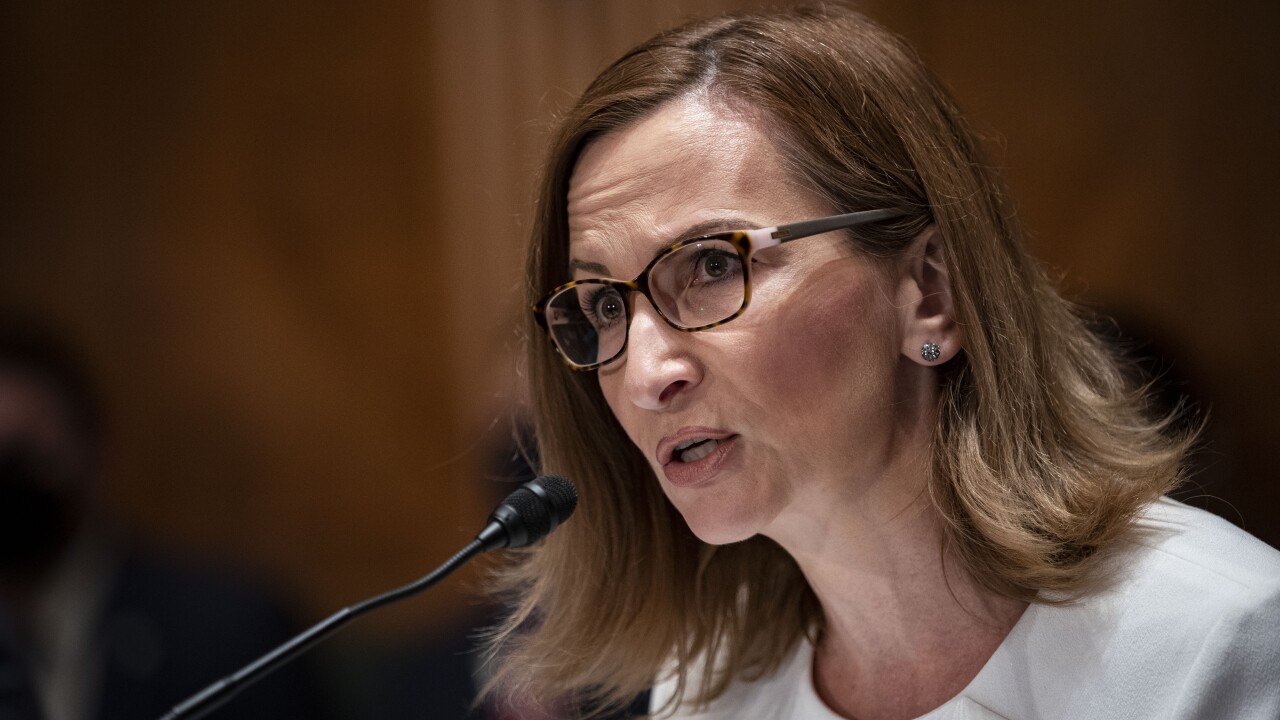China’s threat to impose hefty tariffs on imports of U.S. soybeans and other agricultural products is creating a sense of unease among farmers and ranchers and the banks that lend to them.
Farmers, who have been increasing production for years to meet demand from China, are worried that exports to the world’s second-largest economy will slow if the tariffs take hold, leaving them stuck with more product than they can sell. Bankers, meanwhile, are concerned that their agricultural customers could struggle to repay their debts, forcing banks to beef up their loan-loss reserves.
Their fears were heightened Wednesday when

The U.S. is the world’s largest producer of soybeans and China is the world’s largest buyer, so many agricultural experts had been hopeful that soybeans would be exempt from the tariffs. China accounted for more than half of the $21.6 billion of soybeans U.S. farmers exported last year, according to the U.S. Department of Agriculture.
“Pork is bad enough, but soybeans are even worse,” said Bob Hartwig, the legal counsel for the Iowa Bankers Association, who estimated that China buys about one in every four rows of soybeans produced in the state of Iowa. “Cash flows are tight already and we’re already dealing with a fairly large carryover of corn and soybeans from the last couple years’ crops, so this probably isn’t going to help.”
Tom Jensen, the senior vice president of agribusiness banking at the $20.4 billion-asset First National Bank of Omaha, said that the U.S. has boosted pork production recent years largely in response to increased demand from China.
“Pork production has been ramped up to cover the needs of a global marketplace, so we‘re very concerned here about what would happen if we get into a trade war, or if tariffs on it make it noncompetitive in the global marketplace,” he said.
Some bankers are downplaying the impact of the tariffs, arguing that Chinese consumers would still buy U.S. products even at higher costs. Others insist that even if exports to China slow, U.S. farmers would have little trouble selling their products elsewhere.
Still, the sparring over trade, at the very least, has introduced a new level of uncertainty to an industry that is already prone to volatility. Whether the recent actions will escalate into an all-out trade war or if cooler heads will prevail remains to be seen. Here are five takeaways for ag bankers as U.S.-China negotiations proceed.
Tariffs could add to the rising costs of farmland
For many farmers, the timing couldn’t be worse. If tariffs depress demand for U.S. agricultural goods, it will only add to the toll that rising farmland costs have already taken on the sector.
In the years leading up to 2012, when soybeans and corn hit their peak prices, land values, rents and property taxes also rose as farmers began to buy or rent more acres in order to scale up production. As the price of corn and soybeans started falling, those associated land costs did not fall in tandem with commodity prices.
That ultimately trickles back to the banker. If farmers struggle to turn a profit, they’ll then struggle to pay down their debt on things like farm equipment and working lines of credit.
“If I have debt on my equipment as a farmer, then I’ve got principal payments I’ve got to make each year. If I’m breaking even from my operation before my debt service, then I need a profit before I can make those principal payments,” said Mike Jacobson, the president and CEO of the $699 million-asset NebraskaLand National Bank in North Platte. “I’ll have to borrow on my operating line and then I won’t be able to pay my operating line in full, so I’m going to have carryover debt from the previous year’s loss.”
Regulatory scrutiny could intensify
Bankers may want to work with their farmers who are toiling just to break even, and one option is to restructure their debt to offer those clients a little more breathing room. However, that raises the question of how regulators will respond.
Too many troubled debt restructurings are likely to draw regulatory scrutiny, and one way regulators could respond is by requiring banks to beef up their loan-loss reserves on those portfolios. At this point, it’s unclear how regulators might take into account the effects of tariffs. Until now, the agricultural sector’s strong performance in the face of adversity seems to have appeased bank regulators.
“So far, and I’m knocking on wood, the regulators have shown a great deal of restraint, in my opinion,” said John Blanchfield, an industry consultant and owner of Agricultural Banking Advisory Services. “If you look at all the Federal Reserve banks over the last couple quarters, there have not been widespread problems in the ag credit portfolios of banks.”
That’s the good news, for now.
Blanchfield added, “The bad news is, how much longer can that all keep happening? That’s why everyone’s in this wait-and-see stance right now.”
Ag bankers may need to rethink collateral
If profits on certain products decline because of tariffs, bankers may need to seek other collateral besides sales receipts, if they haven’t already, said Blanchfield.
Other types of collateral could include machinery, equipment or livestock, but a softer market for some agricultural products could reduce the value of that collateral, as well. For instance, if the market for dairy products weakens, then dairy cows would become less valuable as collateral.
More commonly, bankers tend to collateralize many of those ag loans with land, Blanchfield added.
“Real estate is an ag banker’s best buddy,” he said. “A lot of credit for the annual production of something is further collateralized with real estate.”
Some products might find homes in other markets
If American agricultural products become more expensive to Chinese consumers, then it follows that those consumers will look for cheaper alternatives. But consumers elsewhere might be just as happy to snap up some of those goods at lower prices, some bankers said.
Assuming the U.S. doesn’t pull out of the North American Free Trade Agreement, Mexico could buy some of that surplus U.S. pork, said Roland Fumasi, a senior analyst of food and agribusiness at the $13.9 billion-asset Rabobank in Roseville, Calif.
Some bankers are downplaying the impact of the tariffs, arguing that Chinese consumers would still buy U.S. products even at higher costs. Others insist that even if exports to China slow, U.S. farmers would have little trouble selling their products elsewhere.
Where soybeans are concerned, Brazil and Argentina are the world’s next two largest producers of the crop, but they also don’t have much capacity to scale up from their current production levels, Fumasi said.
Ag bankers aren’t ready to write off China just yet, and some even believe that regardless of tariffs, China will keep importing those products simply because its growing middle class wants them.
“If someone wants to put tariffs on our products, then they’re going to have to pay more for our product, or they’re going to have to find a substitute,” said Kent Steinwert, the president and CEO of the $3.1 billion-asset Farmers & Merchants Bancorp in Lodi, Calif. “But they like American almonds and cherries and apples and they can’t get the same quality from other countries.”
The way Jacobson, the Nebraska banker, sees it, China has just as much at stake as the U.S. does.
“At the end of the day, China has strong income growth, increasing urbanization and an emerging middle class, and all of those things are going to demand a higher protein, higher-quality diet,” he said. “The demand is going to be there and they can afford to pay for it.”
Forward-pricing could blunt the impact of tariffs
There’s no way to really prepare for tariffs or trade war, but bankers and trade associations highlighted one potential saving grace: Many of their farmers have already sold a portion of their expected crop output for the year, meaning they do have some security against drops in price or demand.
“Sometime during the year, there’s a potential to lock in some product and you need to do that this year,” Jensen said. “As lenders, marketing is something that we stress and talk about until we’re blue in the face.”
Soybean producers in particular got a boost earlier this year when drought hammered Argentina’s soybean crops, thereby driving up demand for American soybeans. Many Iowa soybean farmers took advantage and locked in higher prices for at least some of their crop, said the Iowa Bankers’ Hartwig.
“If prices get lower, with a combination of excess supply and the effect of a tariff from China, they will already have a portion of this crop priced ahead,” he said.





